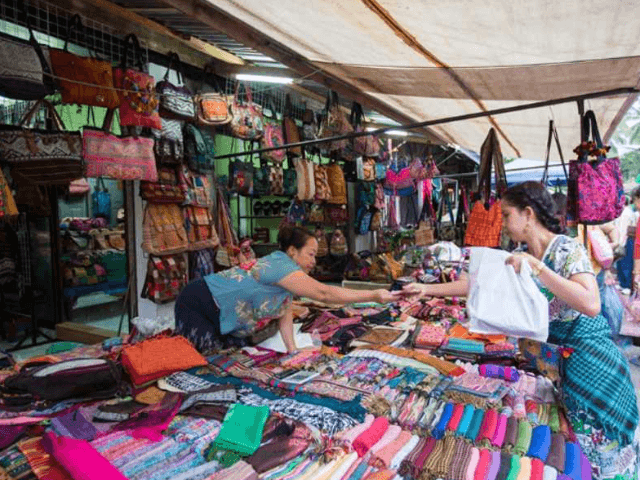If you want to learn about the thousand-year-old culture of Hanoi, about the great and small battles, famous victories or the history of the Vietnamese nation, both glorious and arduous, just renew your trip by visiting the most beautiful museums
TABLE OF CONTENTS
1
Why Visit Hanoi’s Museums?
A Glimpse into Vietnam’s Rich History
Best Time to Visit Museums in Hanoi
How to Plan a Perfect Hanoi Museum Tour
2
Top Must-Visit Museums in Hanoi
Vietnam Museum of Ethnology - Discovering Vietnam’s 54 Ethnic Groups
Hoa Lo Prison Museum - The Infamous "Hanoi Hilton"
Ho Chi Minh Museum - Life and Legacy of Vietnam’s Great Leader
Vietnam Military History Museum - Tales of War and Victory
Fine Arts Museum of Vietnam - A Treasure Trove of Vietnamese Art
Thang Long Imperial Citadel - A UNESCO World Heritage Site
Vietnamese Women’s Museum - Honoring the Strength of Vietnamese Women
How to Make the Most of Your Hanoi Museum Tour?
Beyond Museums - Exploring More of Hanoi’s Culture
Old Quarter & French Quarter - Walking Through Hanoi’s Historic Streets
Where to Stay in Hanoi for a Cultural Experience?
Best Hotels & Homestays Near Hanoi’s Museums
Boutique Hotels with a Historical Touch
Essential Travel Tips for Your Hanoi Museum Tour
Explore Hanoi’s Museums - A Journey Through Vietnam’s Culture & History
Hanoi is not just about bustling streets, vibrant food markets, and peaceful lakes-it’s also home to some of the most insightful museums in Vietnam. For those who are curious about the country’s past, its diverse culture, and its path to independence and development, Hanoi’s museums offer a fascinating and enriching experience.
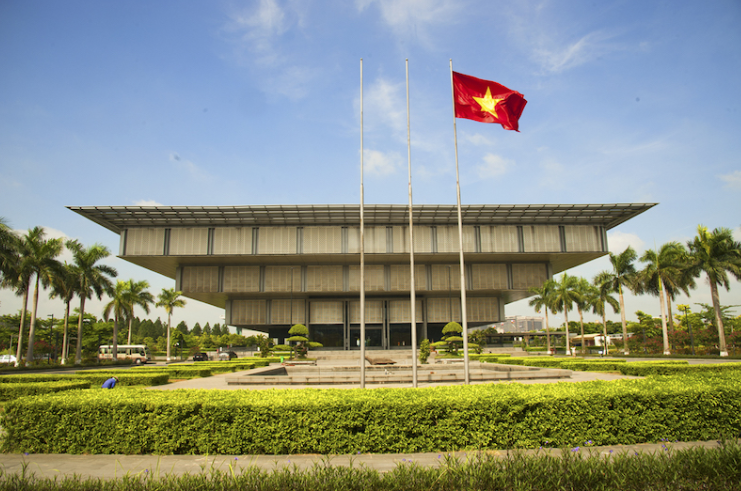
Why Visit Hanoi’s Museums?
A Glimpse into Vietnam’s Rich History
Visiting museums in Hanoi is like flipping through a living history book. Each museum tells a different chapter of Vietnam’s story-from ancient civilizations and royal dynasties to colonial resistance and the modern-day nation.
The Vietnam National Museum of History provides a sweeping overview of the country’s evolution, with exhibits on prehistoric times, feudal kingdoms, and the struggle for independence. Meanwhile, the Ho Chi Minh Museum offers a moving tribute to Vietnam’s beloved leader, showcasing his life, ideals, and impact on the country’s development.
If you're more interested in cultural diversity, the Vietnam Museum of Ethnology is a must-visit. It presents the vibrant traditions, clothing, housing, and rituals of Vietnam’s 54 ethnic groups through well-curated displays and full-scale replicas.
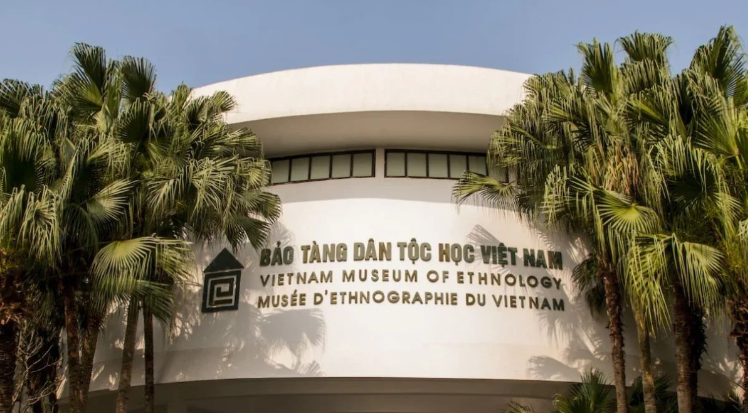
Best Time to Visit Museums in Hanoi
Most museums in Hanoi open from 8:00 AM to 5:00 PM, and many are closed on Mondays, so it’s best to plan your visit on weekdays from Tuesday to Sunday.
The morning hours are the ideal time to explore, especially if you want to avoid the crowds and enjoy a more peaceful atmosphere. The weather in Hanoi can get quite warm and humid by midday, especially during summer, so starting early will help make your museum tour more comfortable.
From October to April, Hanoi enjoys cooler and drier weather, making it a great season for walking between museums and enjoying the city in general.
How to Plan a Perfect Hanoi Museum Tour
Planning a museum tour in Hanoi doesn’t have to be complicated. With a bit of preparation, you can explore several fascinating places in one day-without feeling rushed or overwhelmed.
Start by choosing the type of museums you’re most interested in. If you love history and want a deeper understanding of Vietnam’s journey through time, you might begin your day at the Vietnam National Museum of History, then head over to the Ho Chi Minh Museum for insights into the country’s modern development and independence movement.
Prefer learning about people and cultures? Spend your morning at the Vietnam Museum of Ethnology, which showcases the lives and traditions of Vietnam’s 54 ethnic groups. The museum even has an open-air section with traditional houses you can walk through, making it feel like a mini cultural village.
For those into art and social topics, the Vietnam Fine Arts Museum and Vietnamese Women’s Museum are both centrally located and offer unique perspectives through beautiful displays and storytelling.
To make the most of your time:
- Aim to visit 2-3 museums in one day. Most are large and packed with information, so allow at least 1-2 hours for each.
- Check the opening hours in advance (usually 8:00 AM - 5:00 PM, closed on Mondays).
- Try to go in the morning when museums are quieter and the weather is cooler.
- Plan lunch or coffee breaks nearby-Hanoi has no shortage of cozy cafés and delicious local food spots, perfect for relaxing between visits.
- Consider using Grab or taxi apps if you’re visiting museums that are far apart, like the Museum of Ethnology.
With the right mix of planning and spontaneity, your Hanoi museum tour can be one of the most enriching parts of your trip-full of stories, culture, and inspiration.
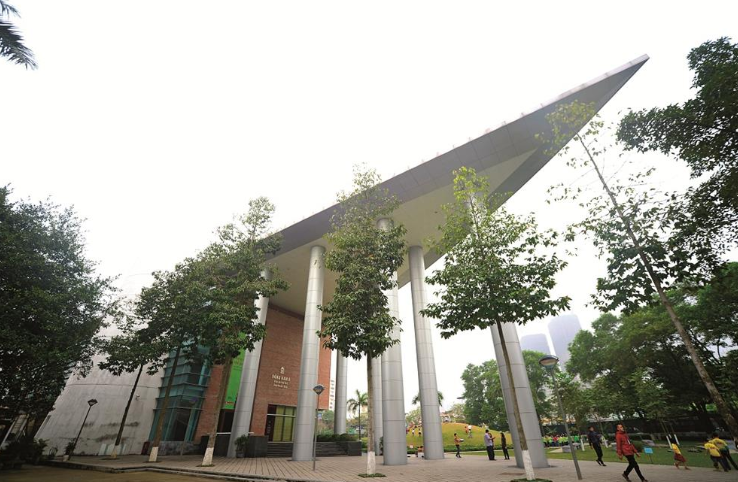
Top Must-Visit Museums in Hanoi
Vietnam Museum of Ethnology - Discovering Vietnam’s 54 Ethnic Groups
Exhibits on traditional customs, clothing, and architecture
The Vietnam Museum of Ethnology offers a fascinating look into the lives and traditions of Vietnam’s 54 ethnic groups. Inside the main exhibition hall, visitors will find displays of traditional clothing, spiritual artifacts, agricultural tools, and everyday household items. Each section tells a story about the customs, beliefs, and unique lifestyles of different communities across the country. Detailed descriptions in both Vietnamese and English help bring the exhibits to life, making the experience both informative and accessible.
Outdoor ethnic houses and cultural performances
Beyond the indoor galleries, the museum features a spacious garden with full-scale replicas of ethnic minority houses. Visitors can step into stilt houses from the Central Highlands, longhouses from the Bahnar people, and other architectural styles that reflect Vietnam’s regional diversity. On certain weekends and holidays, the museum also hosts cultural performances such as traditional dances, folk songs, and handicraft demonstrations, providing an immersive experience for all ages.
This museum is ideal for travelers interested in understanding Vietnam’s multicultural identity and is especially enjoyable for families and school groups.
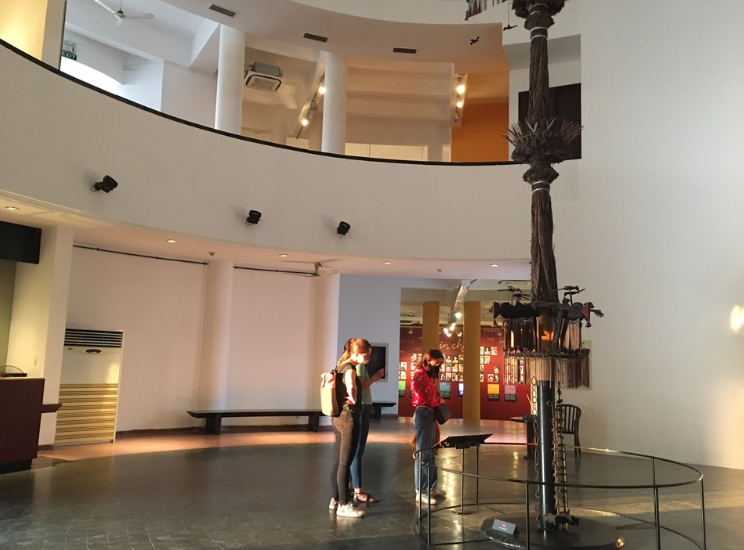
Hoa Lo Prison Museum - The Infamous "Hanoi Hilton"
The history of Vietnamese revolutionaries and American POWs
Hoa Lo Prison Museum, once a colonial-era prison built by the French, holds a dark yet deeply significant place in Vietnam’s history. Originally used to detain Vietnamese revolutionaries who fought for independence, the prison later became infamous as the “Hanoi Hilton” during the Vietnam War, where American prisoners of war (POWs), including Senator John McCain, were held. The museum offers insight into both chapters, giving visitors a sobering look at the harsh realities faced by those who were imprisoned here.
Chilling exhibits of prison life and historical artifacts
Walking through the preserved prison corridors, visitors encounter haunting displays of cramped prison cells, leg shackles, and the guillotine room-grim reminders of colonial oppression. Life-sized mannequins and authentic artifacts such as clothing, letters, and personal belongings recreate the daily struggles of inmates. Photographs, video footage, and detailed panels document the resilience of Vietnamese revolutionaries and provide different perspectives on the prison’s role during wartime. Despite its grim past, the museum stands as a tribute to the strength of the human spirit.
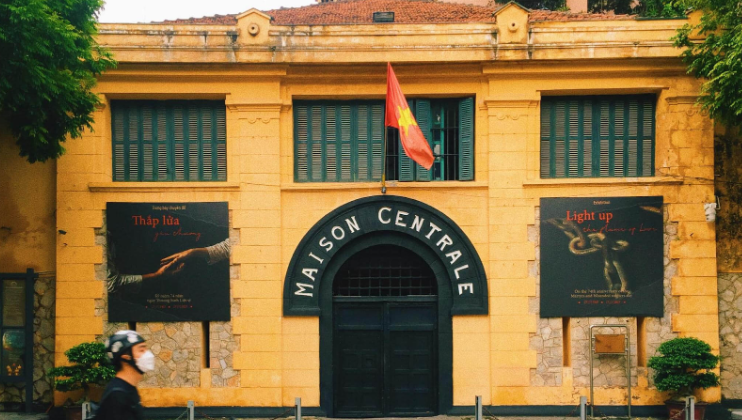
Vietnam National Museum of History - A Walk Through Time
Artifacts from ancient dynasties, feudal eras, and modern Vietnam
Housed in a beautiful colonial-era building near the Hanoi Opera House, the Vietnam National Museum of History offers a comprehensive journey through the country's past. The museum is divided into two main periods: prehistoric and early history on one side, and modern history on the other. You’ll find artifacts dating back thousands of years, from the Bronze Age Dong Son drums to relics from the Ly, Tran, and Nguyen dynasties. Intricately carved statues, ancient weapons, royal attire, and jewelry reflect Vietnam’s rich cultural and political evolution.
Displays of Vietnam’s struggle for independence
The museum also dedicates extensive space to Vietnam’s more recent history, particularly its struggles against colonialism and foreign occupation. Through photographs, documents, and revolutionary artifacts, visitors can trace the timeline of Vietnam’s resistance against the French and later the Americans. The exhibits not only recount major events but also highlight the resilience and unity of the Vietnamese people during times of upheaval. This museum is a must-visit for anyone seeking a well-rounded understanding of Vietnam’s long and dynamic history.
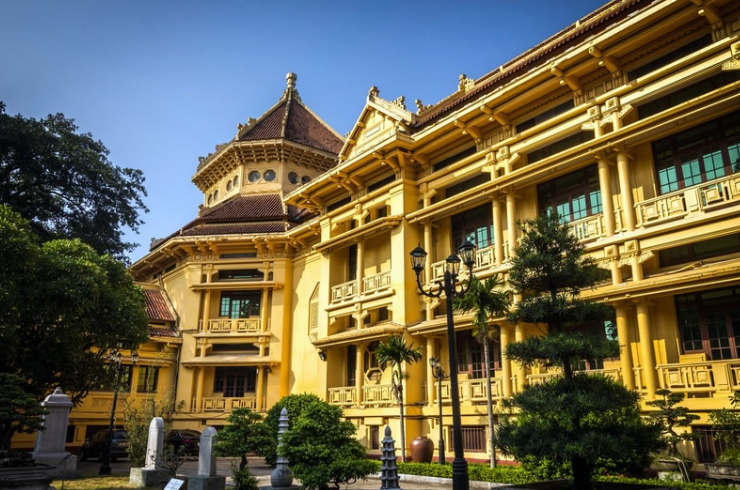
Ho Chi Minh Museum - Life and Legacy of Vietnam’s Great Leader
Insight into Ho Chi Minh’s life and contributions
Located near the iconic Ho Chi Minh Mausoleum, the Ho Chi Minh Museum offers a deep dive into the life and legacy of Vietnam’s most revered leader. The museum traces his journey from a young man traveling the world in search of ways to liberate his country, to the revolutionary leader who guided Vietnam through its most pivotal moments. Through personal artifacts, letters, photographs, and films, visitors can gain a personal and political understanding of “Uncle Ho” and his lifelong dedication to the Vietnamese people.
Symbolic architecture and meaningful exhibits
What sets this museum apart is its striking and symbolic architecture. Designed to resemble a white lotus, the building itself pays homage to purity and the revolutionary spirit. Inside, the exhibits are thoughtfully arranged to reflect not only historical milestones but also Ho Chi Minh’s ideology, lifestyle, and values. Some displays are creatively presented through abstract art and installations, adding an emotional layer to the storytelling. Visiting the Ho Chi Minh Museum isn’t just about learning history-it’s about connecting with the soul of modern Vietnam.
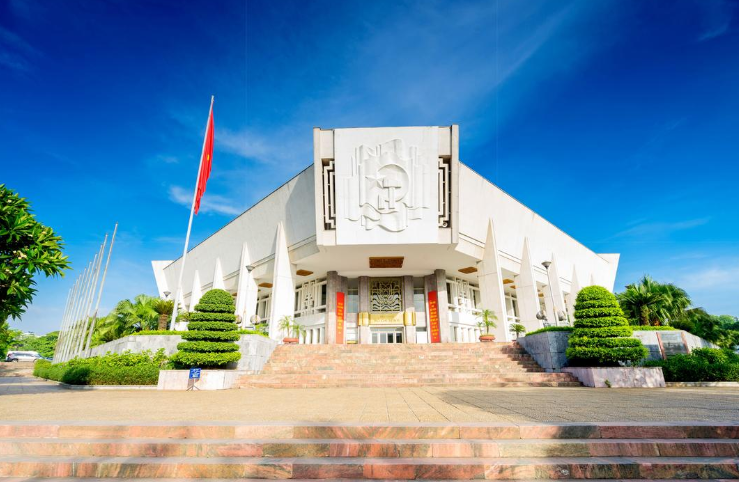
Vietnam Military History Museum - Tales of War and Victory
Vietnam’s military history from ancient times to modern conflicts
The Vietnam Military History Museum offers a comprehensive look at the country’s long and resilient struggle for independence and national defense. From legendary battles against Chinese invasions to the more recent wars with France and the United States, the museum walks visitors through centuries of resistance. Detailed exhibits, timelines, and artifacts provide valuable context on the strategies, sacrifices, and heroism that shaped Vietnam’s identity.
War relics, aircraft, and the famous tank that crashed into the Independence Palace
One of the most striking features of the museum is its outdoor display area, where you’ll find a collection of war relics including fighter planes, helicopters, and missiles. The centerpiece is the actual T-54B tank that famously crashed through the gates of the Independence Palace in Saigon, marking the end of the Vietnam War in 1975. Visitors can also explore the towering Flag Tower of Hanoi, a national symbol that dates back to the early 19th century. The museum provides a powerful, tangible connection to the past and is a must-visit for anyone interested in Vietnam’s wartime history.
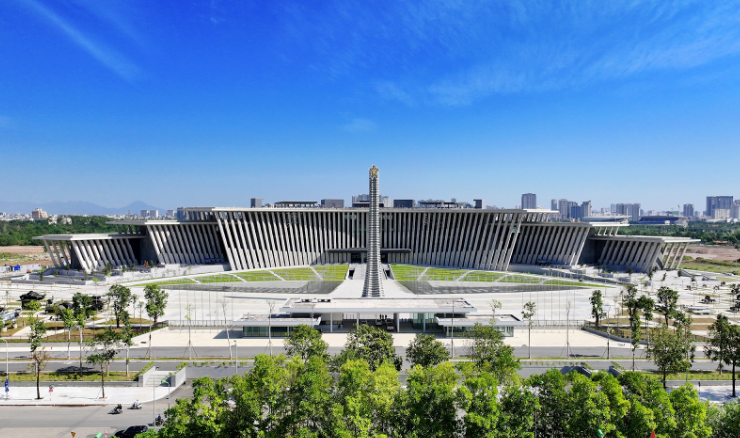
Fine Arts Museum of Vietnam - A Treasure Trove of Vietnamese Art
Traditional paintings, sculptures, and contemporary masterpieces
The Fine Arts Museum of Vietnam is the nation’s leading space for showcasing its diverse and evolving art scene. From ancient Buddhist statues and traditional lacquer paintings to modern abstract works, the museum brings together centuries of Vietnamese creativity. Visitors can admire hand-crafted wooden carvings, silk paintings, religious art, and folk crafts that reflect the country’s rich spiritual and cultural heritage.
Exploring Vietnam’s artistic evolution over centuries
Wandering through the museum’s multi-level galleries, you’ll trace the artistic journey of Vietnam from the early dynasties to the contemporary period. Each room offers a different perspective-some tell stories of everyday life, while others reflect political movements and social change. Whether you’re an art lover or simply curious, the museum provides a visually stunning and thought-provoking window into how art has shaped and been shaped by Vietnamese culture.
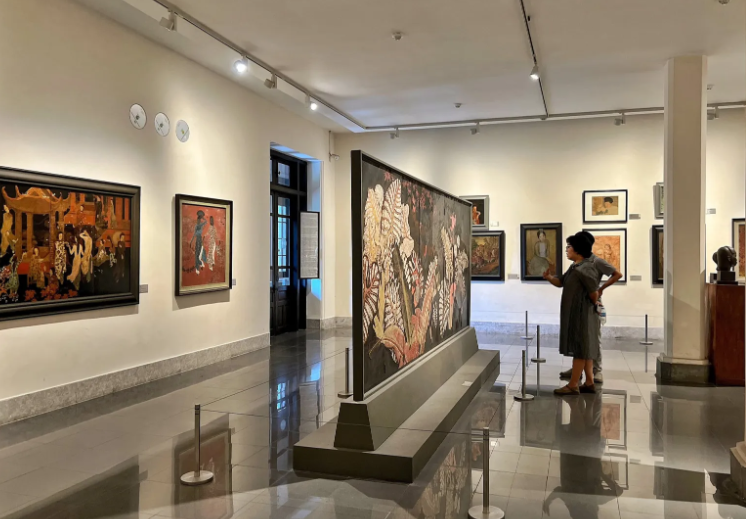
Thang Long Imperial Citadel - A UNESCO World Heritage Site
Archaeological ruins of Vietnam’s ancient capital
The Thang Long Imperial Citadel, a UNESCO World Heritage Site, offers a fascinating glimpse into Vietnam’s history as the heart of the ancient capital of Thang Long (now Hanoi). The citadel, which dates back over a thousand years, was the political center of various Vietnamese dynasties. Visitors can explore the remains of royal palaces, temples, and defensive structures that tell the story of the country’s imperial past. Its extensive archaeological digs have revealed layers of history beneath the surface, making it a must-visit site for history buffs.
Relics from the Ly, Tran, and Le dynasties
Within the citadel, you’ll encounter relics and artifacts from three of Vietnam’s most influential dynasties: the Ly, Tran, and Le. Each dynasty left behind a distinct mark on the architecture, culture, and political landscape. Visitors can admire ancient pottery, royal insignias, and the foundation stones of the old palaces that once stood here. The site not only highlights Vietnam’s imperial glory but also reflects the depth of the country’s historical and cultural evolution.
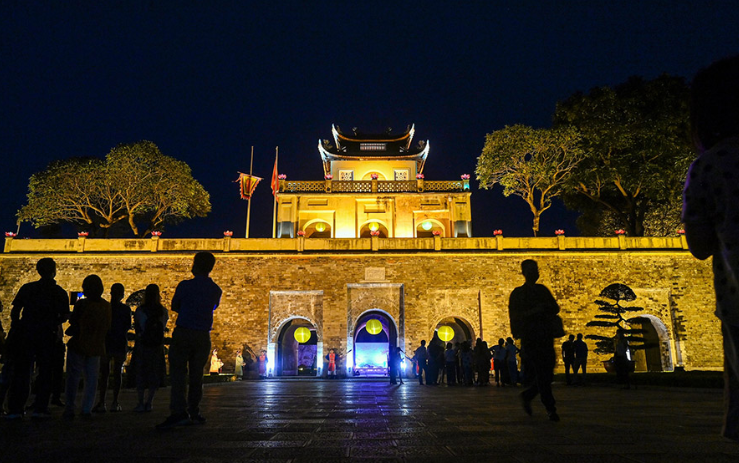
Vietnamese Women’s Museum - Honoring the Strength of Vietnamese Women
Exhibits on women’s roles in history, war, and daily life
The Vietnamese Women’s Museum celebrates the vital contributions of women throughout the nation’s history. It showcases how women have shaped Vietnam’s social, cultural, and political landscapes, from their involvement in wartime efforts to their influence in daily life and family traditions. The museum highlights the resilience and strength of women, particularly in the context of Vietnam’s wars and struggles for independence. Visitors can learn about the courage of female soldiers, activists, and everyday women who played pivotal roles in shaping the nation’s past.
Traditional fashion and cultural artifacts
In addition to historical exhibits, the museum offers a rich collection of traditional Vietnamese clothing, jewelry, and other cultural artifacts. These items reflect the diverse customs and fashion styles across the country’s regions and ethnic groups. Through these artifacts, visitors gain a deeper understanding of the cultural significance of clothing and adornment, especially in ceremonies and rites of passage. The museum also celebrates the artistry and craftsmanship of women in Vietnamese society, presenting a comprehensive view of their role in preserving cultural heritage.
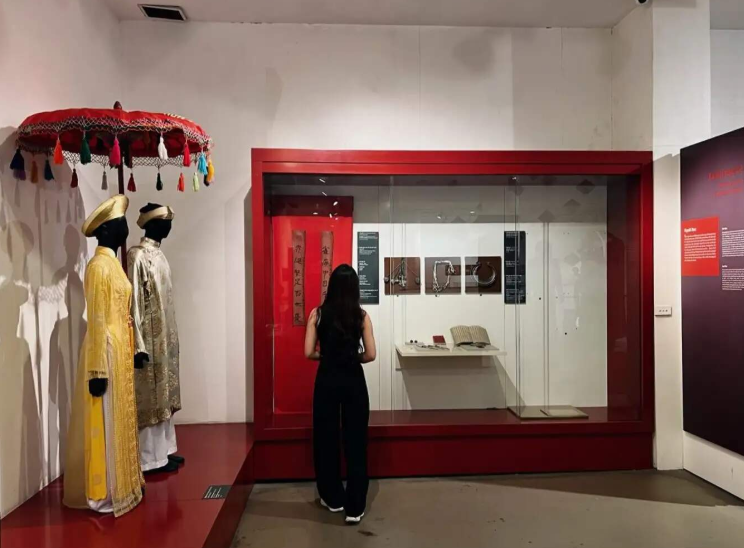
How to Make the Most of Your Hanoi Museum Tour?
Best Routes for a One-Day Museum Tour in Hanoi
If you have just one day to explore the fascinating museums of Hanoi, it’s essential to craft a well-thought-out itinerary to ensure you make the most of your time without feeling rushed. Start your journey early with a visit to the Vietnam Museum of Ethology, a true highlight of Hanoi’s cultural scene. Situated a little outside the Old Quarter, this museum offers an immersive experience into Vietnam’s 54 ethnic groups. The exhibits, which include traditional clothing, homes, and even live cultural performances, will give you a deeper understanding of the diverse cultures that make up this beautiful country. Plan to spend at least two hours here to fully absorb all the exhibits.
From there, head to the Hoa Lo Prison Museum, also known as the "Hanoi Hilton," a short distance away. This historical site, once used to hold Vietnamese revolutionaries and later American POWs, offers chilling insights into Vietnam’s turbulent history, especially during the French colonial period and the Vietnam War. You’ll be moved by the stories of resistance and resilience as you walk through the prison’s narrow corridors and see original artifacts from the era. A visit here should take about an hour or more, depending on how much time you want to spend reflecting on the emotional exhibits.
Next, take a short break for lunch at one of Hanoi’s charming cafés. In the afternoon, visit the Vietnam National Museum of History for a deeper dive into Vietnam’s rich past. The museum showcases a range of artifacts spanning ancient dynasties to the struggles of modern-day Vietnam. From here, take a short walk to the Vietnam Military History Museum, which will take you through the military history of Vietnam from the ancient kingdoms all the way to the modern-day conflicts that shaped the country. The museum is home to some jaw-dropping relics, including aircraft, tanks, and weapons used duringVietnam’s military engagements.
With a route like this, you’ll experience the best of Hanoi’s museums, packed into a single day. Be sure to check the opening hours of each museum ahead of time to avoid any surprises and allow for enough time to take in the exhibits at a comfortable pace.
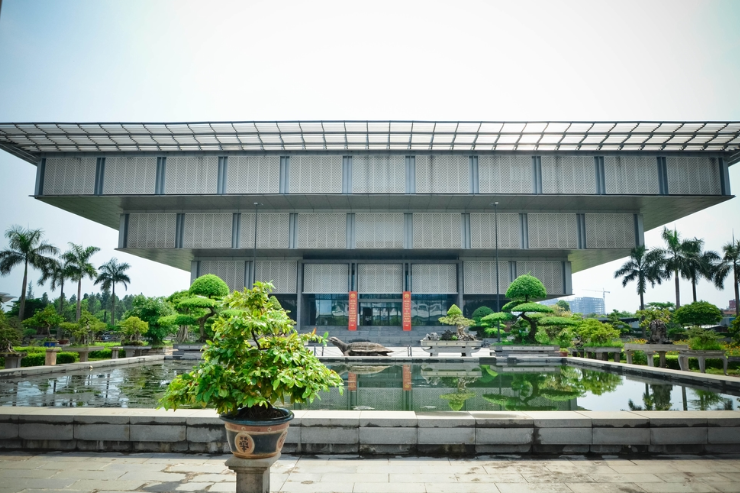
Guided Tours vs. Self-Exploration - What’s Best for You?
When it comes to visiting Hanoi’s museums, one of the first decisions you’ll need to make is whether to go on a guided tour or explore the exhibits independently. Both options have their pros and cons, and the right choice depends on your preferences for depth, flexibility, and immersion.
Guided tours are an excellent choice if you’re looking to dive deeper into the historical context of each exhibit. Many museums in Hanoi offer expert guides who provide detailed explanations, fascinating local anecdotes, and insider knowledge that might not be available on signage or plaques. With a guided tour, you can learn about the historical significance of specific artifacts, the stories behind each exhibit, and the broader cultural implications of Vietnam’s history. Additionally, a guide will help navigate through the museum more efficiently, ensuring you don’t miss any key highlights. Guided tours can also be beneficial for those who prefer structure, as they ensure you don’t miss important details or spend too much time at any one exhibit.
On the other hand, self-exploration is ideal for those who enjoy setting their own pace. It allows you the freedom to linger over the exhibits that captivate you the most and skip over sections you may not find as interesting. Many of Hanoi’s museums offer English-language signage, making it relatively easy to navigate independently. If you have specific interests, such as a fascination with Vietnamese military history or traditional Vietnamese art, self-exploration gives you the flexibility to focus on those areas. Moreover, exploring on your own can make the experience feel more personal and intimate, allowing you to reflect more deeply on what you see without distractions.
For first-time visitors, a combination of both might be the best option: start with a guided tour for the overview and then explore the museums on your own afterward. This approach lets you gain a broad understanding before diving deeper into the details.
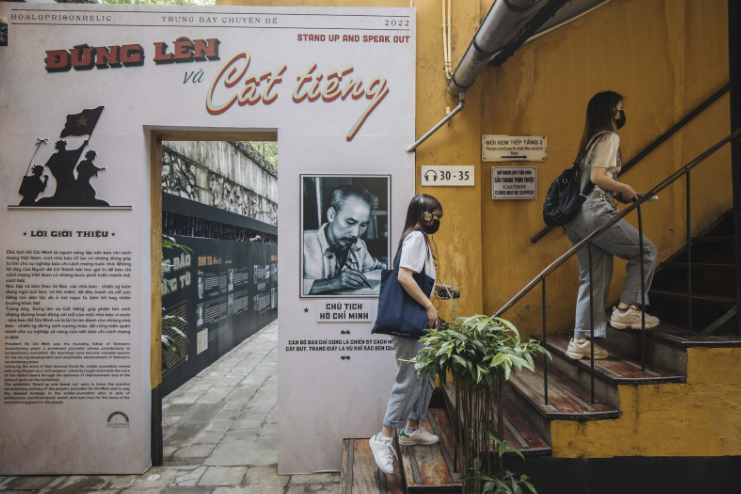
Tips for Visiting Hanoi’s Museums - Tickets, Hours & Language Assistance
To ensure your museum experience in Hanoi is as smooth and enjoyable as possible, here are some essential tips that can help you plan ahead.
- Opening Hours & Ticket Prices: Most of Hanoi’s museums are open every day except Mondays and public holidays, though some may close for special events or maintenance, so always check in advance. Museum hours usually run from 8:00 AM to 5:00 PM, but these may vary, so it's a good idea to double-check on the official museum websites or by calling ahead. Entrance fees are generally affordable, with most museums charging between 20,000 to 60,000 VND (about 1-3 USD). For some museums, like the Vietnam Museum of Ethnology, there are discounts for students and large groups, so be sure to bring your student ID if applicable.
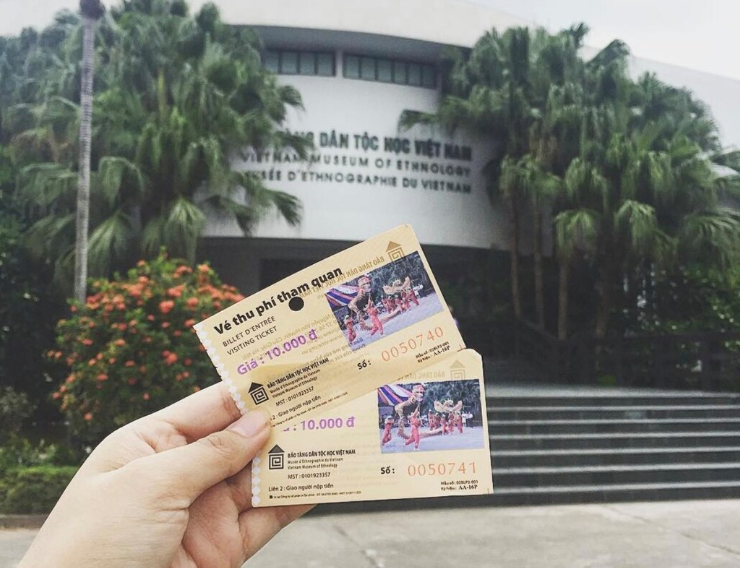
- Language Assistance: While many museums in Hanoi offer English-language signage, it’s worth noting that some of the more off-the-beaten-path museums may only have Vietnamese explanations. To get the most out of your visit, consider renting an audio guide or downloading a museum-specific app, many of which offer in-depth commentary in multiple languages. Alternatively, you can join a guided tour in English, which is often available and can be booked either in advance or at the museum.
- Museum Etiquette & Dress Code: When visiting Hanoi’s museums, it’s important to be respectful of local customs and traditions. Avoid loud talking or disruptive behavior, especially in more somber museums like the Hoa Lo Prison Museum, where exhibits can be emotional. Also, be aware that some museums in Hanoi have a no photography policy for certain exhibits or galleries, so always check for signage indicating whether photography is allowed. In terms of attire, dress comfortably, as many museums require you to walk or stand for long periods. Comfortable shoes are a must, and it’s a good idea to bring a light jacket if you’re visiting air-conditioned museums.
By planning ahead and considering these tips, you’ll be able to enjoy a seamless and enriching museum tour in Hanoi, gaining a deeper understanding of Vietnam’s history, culture, and people.
Beyond Museums - Exploring More of Hanoi’s Culture
While Hanoi’s museums offer a rich window into the history and culture of Vietnam, the city itself is full of other cultural experiences that will leave you captivated. From traditional performances to strolling through historic neighborhoods, Hanoi offers an abundance of ways to immerse yourself in the essence of Vietnamese culture. Here’s how you can go beyond the museums to experience more of what the city has to offer.
Traditional Water Puppet Shows & Cultural Performances
One of the most iconic cultural experiences you can’t miss in Hanoi is a water puppet show. This ancient Vietnamese art form dates back over a thousand years and is typically performed on a water stage, where puppets are controlled by skillful puppeteers hidden behind a bamboo screen. The shows are a delightful mix of traditional music, storytelling, and puppetry, often depicting scenes of rural life, folklore, and ancient Vietnamese myths. The Thang Long Water Puppet Theatre in Hanoi’s Old Quarter is the perfect place to catch an authentic performance, which typically lasts about an hour. It’s a fun and engaging experience for visitors of all ages and provides a unique glimpse into Vietnam’s cultural heritage.
Aside from water puppetry, Hanoi also offers regular cultural performances at various venues, from folk music and dance to traditional opera. These performances are an excellent way to further connect with the sounds, rhythms, and stories of Vietnam, enhancing your understanding of the culture.
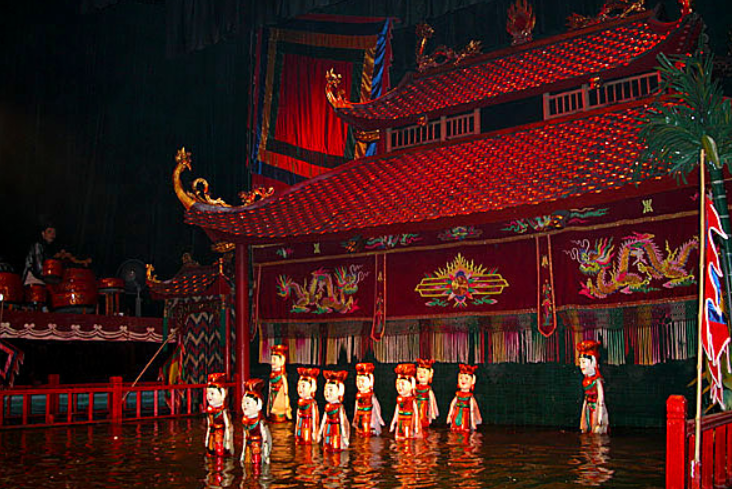
Old Quarter & French Quarter - Walking Through Hanoi’s Historic Streets
No trip to Hanoi is complete without wandering through its Old Quarter and French Quarter. These two areas of the city offer contrasting yet complementary glimpses into Hanoi’s vibrant past and present.
The Old Quarter is the beating heart of Hanoi, where centuries-old streets and traditional architecture coexist with modern shops, cafes, and street vendors. As you stroll through the maze of narrow lanes, each named after the traditional trades once practiced there (such as Hang Bac for silver or Hang Duong for candy), you’ll feel as though you’ve stepped back in time. The Old Quarter is also home to many historical sites and temples that offer a peaceful respite from the bustle of the city.
Just a short walk away, the French Quarter offers a completely different atmosphere. This area is marked by elegant colonial architecture, wide boulevards, and leafy streets. Here, you’ll find the iconic Hanoi Opera House, St. Joseph’s Cathedral, and several other colonial-era buildings that reflect the influence of French rule in the early 20th century. The French Quarter is perfect for a leisurely walk, where you can admire the blend of old and new architecture, sip coffee at a chic café, and enjoy the calm, sophisticated vibe of this part of the city.
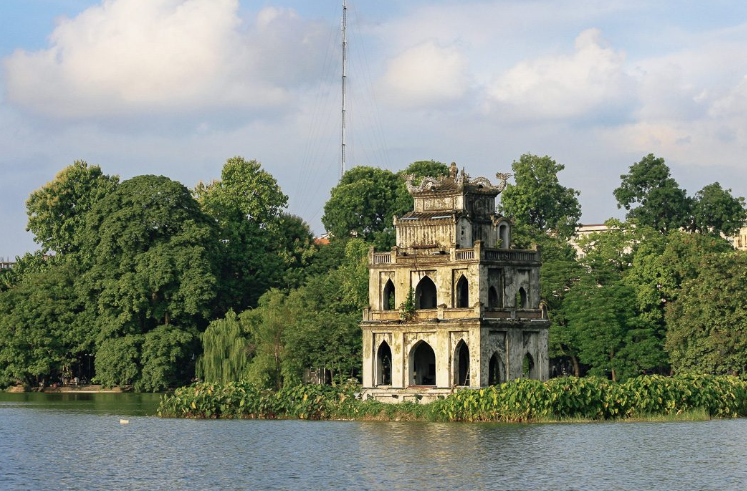
Must-Try Traditional Dishes Near Hanoi’s Museums
While exploring Hanoi’s museums and cultural sites, make sure to also indulge in the city’s rich culinary offerings. Vietnamese food is known for its balance of flavors, fresh ingredients, and aromatic herbs, and Hanoi is the perfect place to sample authentic local dishes.
Near the Vietnam Museum of Ethnology, try Bun Cha, a Hanoi specialty consisting of grilled pork (often served with crispy skin), vermicelli noodles, and fresh herbs, all accompanied by a tangy dipping sauce. This dish is a perfect example of Hanoi’s unique culinary traditions and is a must-try for visitors.

Near the Hoa Lo Prison Museum, take a break at one of the many street food stalls that line the streets and enjoy a bowl of Pho-Vietnam’s famous noodle soup. Whether you prefer the beef or chicken version, pho is a comforting and delicious dish that has become synonymous with Vietnamese cuisine. Pair it with a refreshing glass of Sinh To (a Vietnamese smoothie made from fresh fruit) to complete the meal.
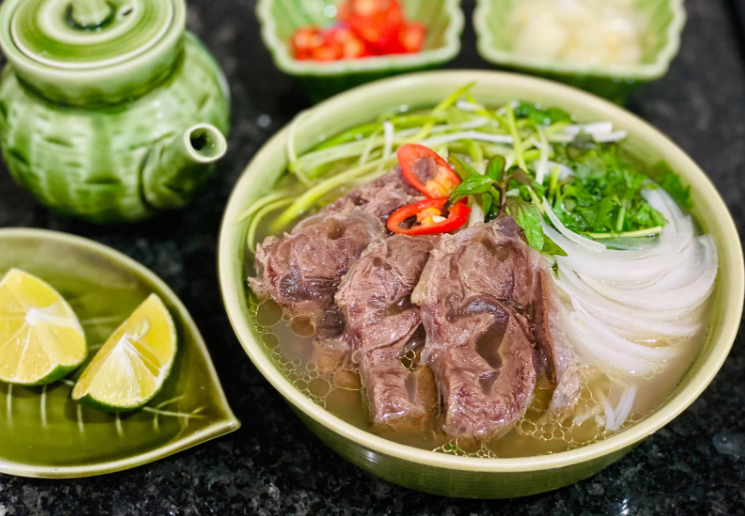
In the French Quarter, you can enjoy more sophisticated fare at one of the area’s many restaurants, such as Cha Ca La Vong-a Hanoi institution known for serving Cha Ca, a dish of grilled fish, turmeric, and dill, which has been perfected over generations. This fragrant, flavorful dish reflects Hanoi’s unique combination of indigenous ingredients and French culinary influences.
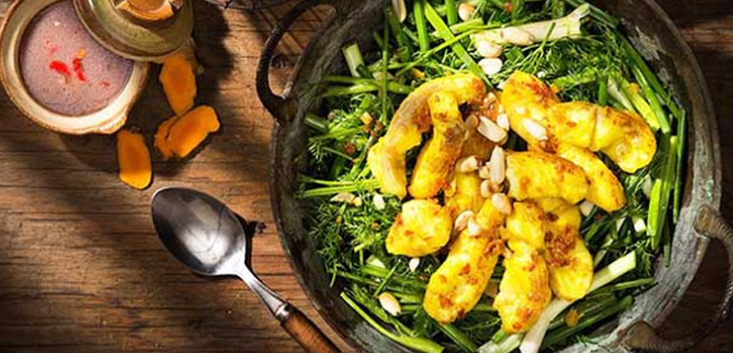
As you explore Hanoi’s cultural landmarks, make sure to sample the food around each one, as it adds another layer of richness to the city’s diverse culture. From bustling street food stalls to elegant sit-down restaurants, Hanoi’s food scene is a delightful journey of its own.
Where to Stay in Hanoi for a Cultural Experience?
Hanoi is a city brimming with culture and history, and where you stay can significantly enhance your experience of the city. Whether you’re looking for budget-friendly options or a luxurious retreat, there are a variety of accommodation choices that will bring you closer to the heart of Hanoi’s rich cultural offerings. Here’s a guide to the best places to stay while exploring Hanoi’s museums and historical sites.
Best Hotels & Homestays Near Hanoi’s Museums
To get the most out of your museum tour in Hanoi, consider staying near the city's main cultural attractions. Many hotels and homestays are located just a short walk from key museums like the Vietnam Museum of Ethnology, Hoa Lo Prison Museum, and Vietnam Military History Museum. Staying near these locations means you’ll be able to easily explore the city's history, art, and culture while being close to local markets, eateries, and vibrant neighborhoods.
For a more immersive experience, try staying in a traditional Vietnamese homestay, where you can interact with local families and gain a deeper understanding of Vietnamese life and customs. Some homestays even offer guided tours to nearby historical sites and cultural performances.
Budget, Mid-Range, and Luxury Accommodation Options
No matter your budget, Hanoi offers a wide range of accommodation options that suit all types of travelers. Whether you’re looking to spend a little or indulge in luxury, here are some recommendations for every price point:
- Budget Accommodation: For those on a tighter budget, Hanoi has a host of affordable options that still offer comfort and convenience. Hostels and guesthouses in the Old Quarter are perfect for backpackers and solo travelers. Hanoi Backpacker Hostel and Little Hanoi Hostel provide both affordable beds and a friendly, social atmosphere, making them great choices for those wanting to meet other travelers.
- Mid-Range Hotels: If you're looking for something with more amenities but at a reasonable price, the Hoan Kiem Lake area offers some fantastic mid-range hotels with easy access to museums, historic landmarks, and restaurants. The Oriental Jade Hotel and Hanoi La Siesta Hotel are well-rated for their comfortable rooms, great service, and convenient locations, making them ideal for those who want a comfortable stay without breaking the bank.
- Luxury Accommodation: For those seeking luxury, Hanoi has several upscale hotels and resorts that provide a five-star experience. Sofitel Legend Metropole Hanoi is a historical landmark in itself and offers a blend of French colonial charm and modern luxury. Another luxurious option is the InterContinental Hanoi Westlake, which offers stunning views over West Lake and is an oasis of tranquility, yet still close to Hanoi's top cultural sites.
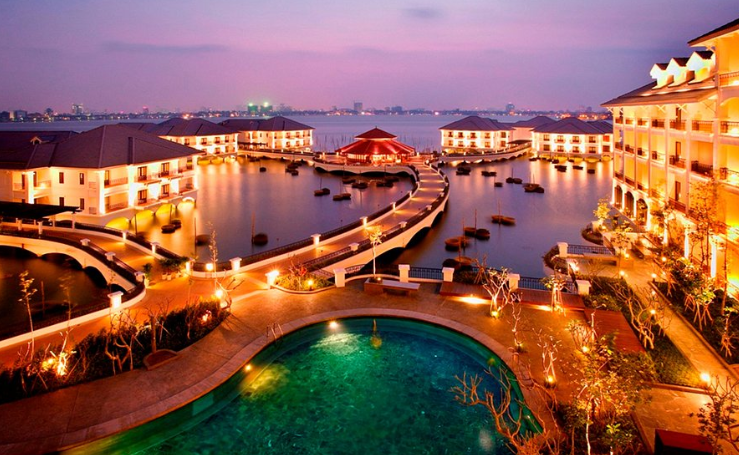
Boutique Hotels with a Historical Touch
If you want to stay in a place that exudes Hanoi’s charm and history, consider booking a room in one of the city’s boutique hotels. These charming accommodations are often housed in colonial-era buildings or are designed to reflect traditional Vietnamese architecture, offering a unique experience that ties into Hanoi’s cultural heritage.
One such boutique hotel is The Hanoi Club Hotel & Lake Palais Residences, located near Hoan Kiem Lake, blending old-world charm with modern facilities. The hotel’s design captures the essence of Hanoi’s colonial past while offering comfort and elegance. Another option is The Lapis Hotel, which features a mix of contemporary and classic Vietnamese decor, providing a cozy and stylish base for exploring the city’s historical sites.
For a truly immersive cultural experience, boutique hotels in the French Quarter area, such as Maison d'Hanoi or Hanoi Golden Lake Hotel, offer a glimpse of the city’s French colonial influence while providing a peaceful retreat after a busy day of sightseeing.
Whether you’re traveling on a budget or seeking a luxurious stay, Hanoi offers a range of accommodations that will help you experience the city’s history, charm, and rich culture. Staying in the heart of Hanoi ensures you’re just steps away from its many museums, vibrant markets, and beautiful landmarks, allowing you to make the most of your cultural journey.
Essential Travel Tips for Your Hanoi Museum Tour
When planning your museum tour in Hanoi, a little preparation goes a long way in ensuring you have a smooth and enjoyable experience. From navigating the city’s transportation system to knowing the best times to visit museums and understanding photography rules, here are some essential tips to help you make the most of your cultural journey.
Transportation - How to Get Around Hanoi Easily
Getting around Hanoi is relatively easy, and there are several transportation options to help you move between the city’s museums and cultural landmarks. Here’s a quick guide:
Walking: Many of Hanoi's most famous museums, including the Vietnam Military History Museum and Hoa Lo Prison Museum, are located in close proximity to each other, especially in the Old Quarter. If you're up for it, walking is the best way to explore Hanoi at your own pace and soak in the vibrant street life.
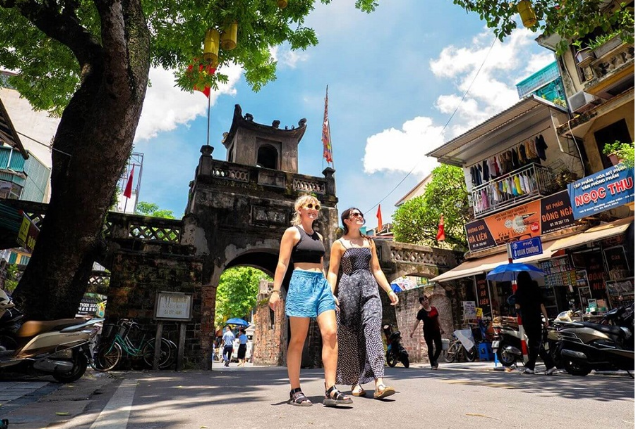
Taxis & Ride-Hailing Apps: For convenience and comfort, especially if you're heading to museums a bit further away, taxis are a great option. Apps like Grab (Southeast Asia’s version of Uber) are widely used in Hanoi, offering affordable rides with a few taps on your phone.

Cyclo (Pedicab): For a more traditional way of getting around, try a cyclo ride. These rickshaw-like vehicles can be a fun and scenic way to travel between museums, especially in the Old Quarter.
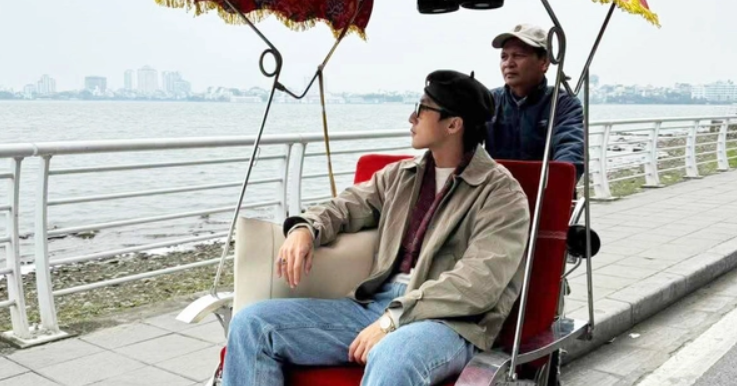
Public Buses: Hanoi’s bus network is extensive, though it can be a bit tricky for first-time visitors. If you're comfortable navigating public transport, this is a budget-friendly option. Look up routes on the bus company’s website or ask for guidance at your hotel.
Motorbike Rentals: If you’re feeling adventurous and confident, renting a motorbike is another convenient and affordable way to explore the city. Many rental shops offer motorbikes or scooters for a day or week, and it’s a popular way for both locals and tourists to get around.
Entrance Fees & Best Times to Visit to Avoid Crowds
To maximize your museum experience in Hanoi, it's essential to plan your visits with crowd management in mind. Here are some tips:
- Museum Entrance Fees: Most museums in Hanoi offer very reasonable entrance fees, typically ranging from 20,000 to 60,000 VND (less than $3 USD). Some museums offer discounts for students, seniors, or groups, so it’s worth checking ahead. If you plan on visiting multiple museums, inquire about any available passes that could save you money.
- Best Times to Visit: Hanoi can get quite busy with tourists, especially during public holidays or weekends. To avoid the crowds, plan your museum visits in the morning (before noon) on weekdays, as this is when most museums are quieter. The off-season, generally from September to November and March to May, is also an excellent time to explore as the weather is pleasant, and the museums are less crowded.
- Avoiding Weekend Crowds: Weekends tend to be busier at popular museums like the Vietnam Museum of Ethnology and Hoa Lo Prison Museum, with both locals and tourists flocking to these cultural sites. If you must visit on a weekend, try to go in the early morning or later in the afternoon when the crowds start to thin out.
Photography & Visitor Etiquette in Museums
Photography can help you capture the memories of your Hanoi museum tour, but it's important to be mindful of the rules and respect the museum’s etiquette:
- Photography Rules: Some museums allow photography in certain areas, while others may have restrictions, especially in more sensitive exhibits. Always look for signs or ask staff before taking photos, and be mindful of flash photography, as it can damage artifacts.
- Respecting Cultural Norms: When visiting museums, it's important to respect the space and others. Keep noise to a minimum and be considerate of other visitors. If you want to ask questions or take photos, do so quietly and avoid blocking pathways or obstructing others’ views.
- Dress Code: While there's no strict dress code, it's always a good idea to wear modest and comfortable clothing, especially when visiting cultural sites like the Ho Chi Minh Museum or the Vietnam Women’s Museum, where respect for the exhibits and their significance is paramount.
- Interaction with Artifacts: Museums are places for learning and reflection, so refrain from touching exhibits unless permitted. Many museums have interactive displays, but it's always best to check first.
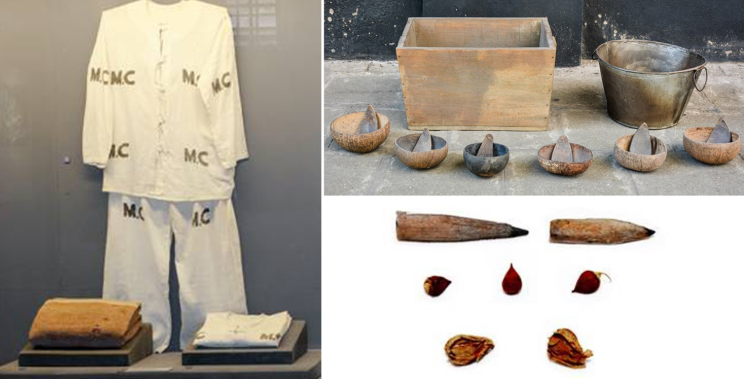
By following these essential tips, you can ensure that your museum tour in Hanoi is not only educational and fun but also respectful of the city's rich culture and history. With a little planning, you’ll be able to explore these incredible landmarks comfortably and fully immerse yourself in the fascinating heritage of Vietnam.
Conclusion - Why a Museum Tour in Hanoi is a Must-Do
A museum tour in Hanoi is more than just a sightseeing activity; it’s an enriching experience that allows you to immerse yourself in Vietnam’s diverse history, culture, and artistic evolution. From the rich traditions of the ethnic groups to the stories of war and revolution, Hanoi's museums provide a window into the country's soul. Whether you're a history enthusiast, an art lover, or someone looking to connect more deeply with Vietnam’s heritage, the city's museums offer something for everyone.
Enriching Your Vietnam Travel Experience Through History
Hanoi's museums are not just places to view artifacts-they are immersive environments where visitors can learn about Vietnam’s past, its struggles, triumphs, and its journey to the present day. Every museum you visit enriches your understanding of Vietnam’s diverse culture, helping to fill the gaps in your knowledge of this fascinating country. Whether it's the Vietnam Military History Museum, which showcases the courage and sacrifice of the Vietnamese people, or the Vietnam Museum of Ethnology, which introduces you to the rich tapestry of Vietnam’s 54 ethnic groups, the experience is one of profound discovery.
For those traveling to Vietnam, a museum tour is a great way to deepen your connection with the country. Each museum offers insight into the Vietnamese way of life, the historical events that shaped it, and the arts that define its identity. By taking time to explore these cultural gems, you’ll not only gain a better appreciation for Vietnam’s history but also feel more at home in this vibrant, dynamic country.
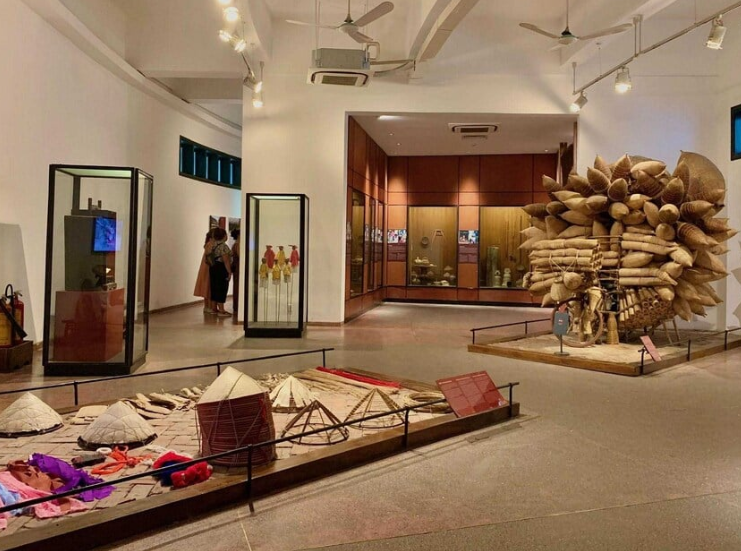
How Hanoi’s Museums Bring the Past to Life
What makes Hanoi’s museums so special is their ability to bring the past to life. It’s one thing to read about history in books, but it’s another to walk through the artifacts, hear the stories, and see the events unfold before your eyes. Museums like the Ho Chi Minh Museum and the Hoa Lo Prison Museum don’t just display objects-they tell stories, making history come alive. Interactive displays, historical photographs, and personal accounts from revolutionaries and freedom fighters provide a tangible connection to the past.
The Vietnam Military History Museum offers visitors a chance to see the very military relics that helped shape Vietnam’s fight for independence, including planes, tanks, and weapons. The artifacts at Thang Long Imperial Citadel, on the other hand, transport you to the days of Vietnam’s ancient dynasties. This connection to history allows you to truly understand how past events continue to influence modern-day Vietnam.
Final Tips for a Smooth and Memorable Museum Tour
To ensure your museum experience is enjoyable and enriching, here are a few final tips:
- Plan Your Time: With so many museums to visit in Hanoi, it’s a good idea to plan your itinerary ahead of time. Group museums that are close to each other to make the most of your day. For example, the Vietnam Military History Museum and Hoa Lo Prison Museum are within walking distance of each other in the Old Quarter.
- Go Early or Late: To avoid the crowds, try to visit museums early in the morning or later in the afternoon. This will allow you to explore without feeling rushed and ensure a more peaceful experience.
- Wear Comfortable Shoes: Many museums, such as the Vietnam Museum of Ethnology and Thang Long Imperial Citadel, require a bit of walking, so comfortable shoes are a must.
- Ask Questions: Don’t hesitate to engage with museum staff or guides. Many of Hanoi’s museums offer guided tours or have knowledgeable staff who can provide fascinating insights into the exhibits.
- Take Your Time: Museums are places to learn and reflect, so take your time absorbing the exhibits. Don’t rush through them; allow the stories and artifacts to truly sink in.
A museum tour in Hanoi is a journey through Vietnam’s heart and soul. It’s a must-do for anyone who wants to understand the country’s past, present, and future. So, take the time to explore these cultural treasures-your experience in Hanoi will be all the richer for it.










